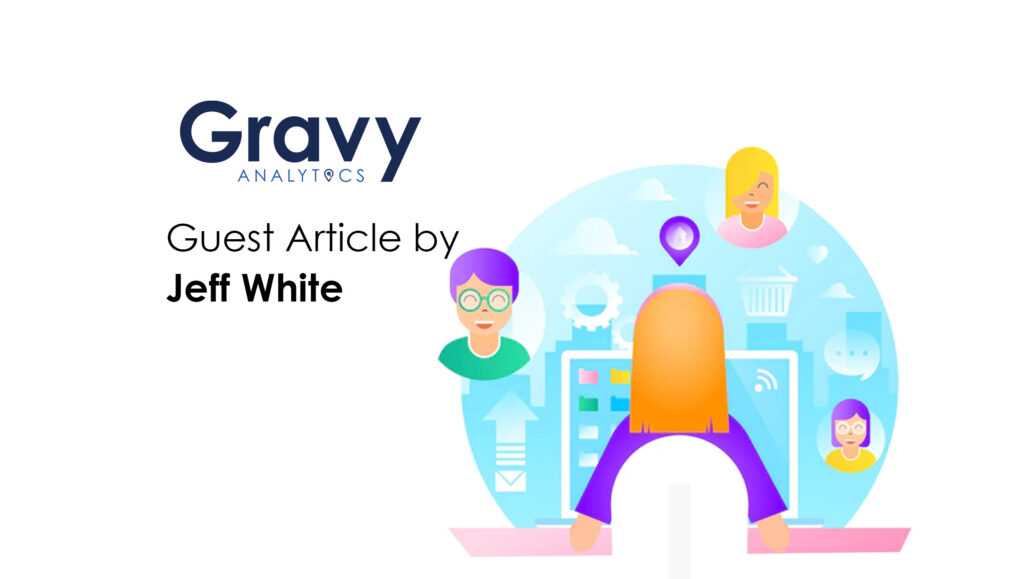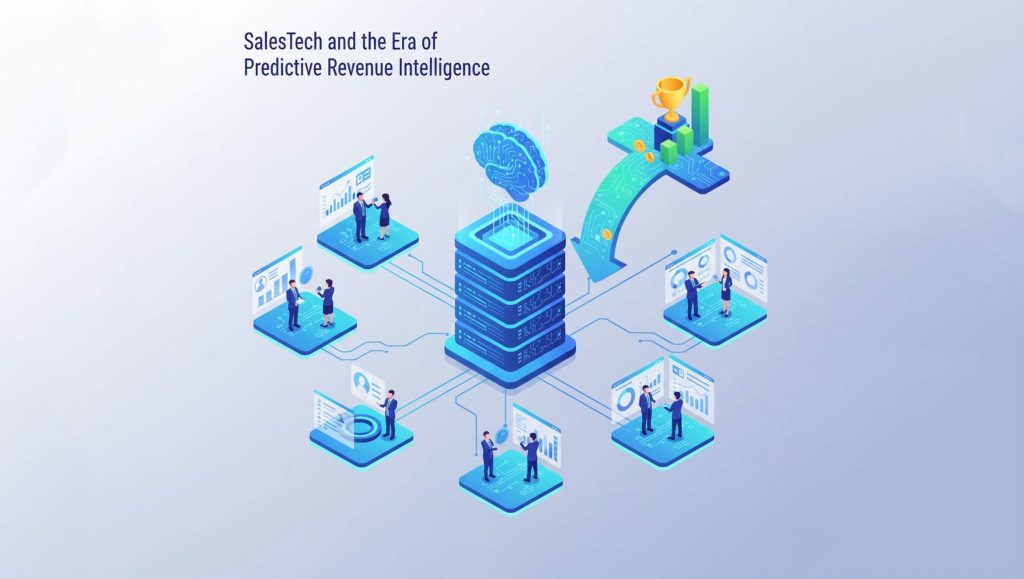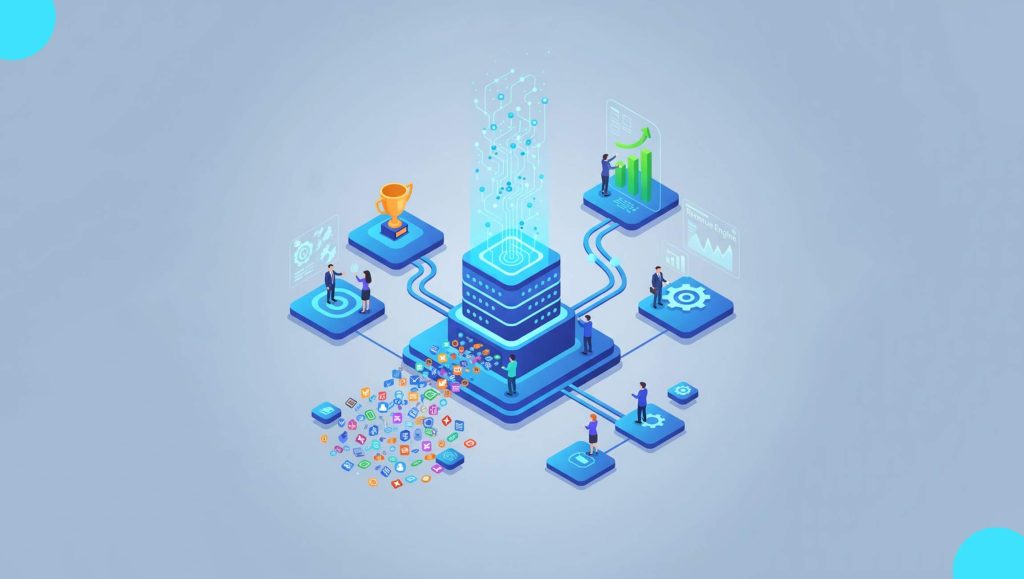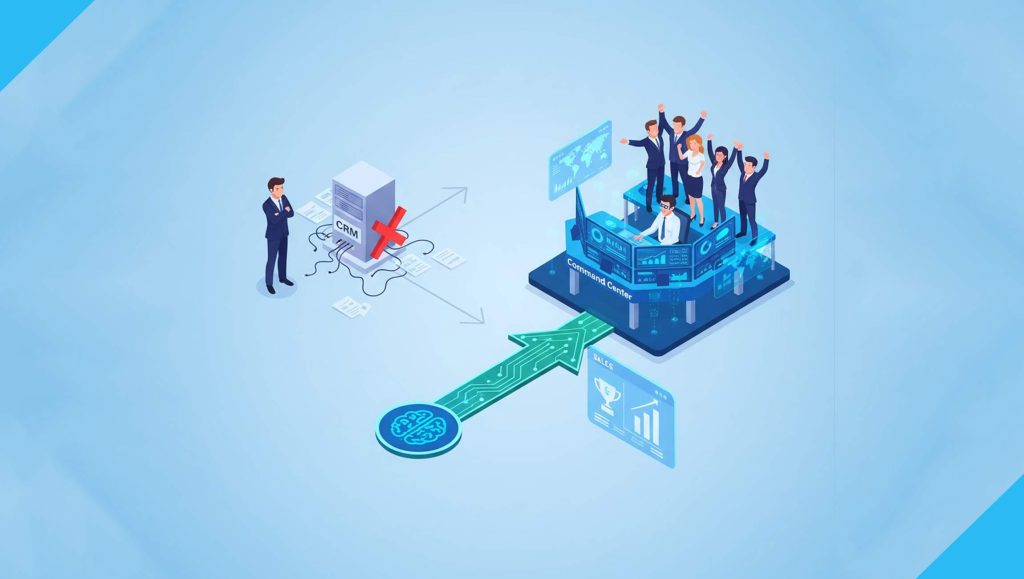Hotels are once again welcoming guests, stores and restaurants are open, and theaters are selling tickets, but to what extent is business really back to normal? Consumers rejoiced as the world opened up again this year with many eager to return to normal, or a new normal that mirrored life prior to the pandemic.
While it might seem like it’s back to business as usual, challenges related to the pandemic, inflation, and supply chain are still impacting almost every industry. Insights from location intelligence reveal which industries are open and back to normal, and which are lagging behind. It’s important for businesses to understand what new consumer behavior trends have emerged and how location data can help inform their business strategies going into next year.
So, how has consumer behavior changed this year and what can be expected this holiday season?
In-person shopping and entertainment venues thrive while outdoor recreation declines
It’s no secret that many industries saw ups and downs over the last few years. During the pandemic, outdoor venues like parks and wilderness areas saw increasingly high foot traffic as consumers looked for ways to get out of the house and stay active while keeping a safe distance from others. Places like shopping malls and movie theaters, in turn, predominantly saw less traffic during this time. However, consumer behavior patterns from this year paint a different picture.
Gravy Analytics recently released a report that utilized location intelligence to analyze foot traffic data to different places to see how various industries are performing and whether or not business really is back to normal. The report found that foot traffic to outdoor recreation venues fell by more than 19% in Q3 2022, compared to the third quarter of the previous year, and instead, consumers flocked to in-person shopping and entertainment venues. Foot traffic to shopping destinations was 15% higher during Q3 2022 compared to Q3 2021, and department stores (49%), outlet malls (38%), and malls (37%) saw the biggest increases in foot traffic during the period. Visits to both general entertainment and nightlife venues were up 18% and 11%, respectively, in Q3 2022 compared to last year, showing that consumers are now prioritizing indoor activities again over outdoor activities that thrived during the pandemic.
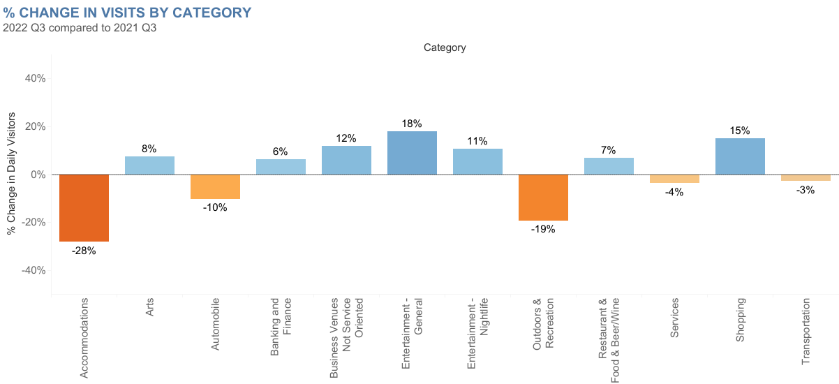
The chart above from Gravy Analytics shows the percentage change in foot traffic to different place categories in Q3 2022 compared to Q3 2021.
Read More: SalesTechStar Interview with Jeff Santelices, CRO at MindTickle
Heavy inflation continues to impact consumer behavior
While the shopping and entertainment industries are seeing high foot traffic this year, consumers are still prioritizing where and what they spend their money on. Due to increased inflation and other socioeconomic factors, brands can expect this to continue while inflation remains high.
Gravy found that consumers are focusing more on bigger quantities and value by shopping at wholesale retailers like Costco and Sam’s Club where they can purchase items in bulk and get more for their money. Foot traffic to Sam’s Club, Costco, and BJ’s Wholesale was at least 25% higher this year, indicating inflation is having a deep impact on the grocery industry.
This year was expected by many to be the year everyone took those delayed pandemic vacations; however, Gravy’s report revealed the accommodations industry (hotels, motels, golf resorts, destination resorts, and lodges) is seeing a steep decline in foot traffic, dropping 28% in Q3 2022 compared to the third quarter of last year. Motels alone saw a 55% drop in foot traffic in this same time period, likely due to the impact of inflation on their target demographic, who likely needed to reserve money for groceries and gas.
Return to office is happening slowly but surely for select cities
Another big trend (and debate) this year has been the return to traditional offices. Many companies have implemented return to office policies for employees in an effort to create a new work normal. Insights from Gravy’s report reveal that this is true for some cities while other cities are seeing a slowdown in office returns.
In Q3 2022, foot traffic to office buildings was 7% higher than Q3 2021, while visits to general business services were up by 19%. Orlando (+44%), Philadelphia (+43%), and Washington, D.C. (+35%) were the three cities that saw the highest increases in foot traffic. Alternatively, New York City, one of the first cities to return to office during the pandemic, only saw an increase of 12% signaling a slowdown.
Return to office will be a trend to watch going into 2023 as many companies are now deciding whether or not to bring their workforces back to traditional offices or go fully remote instead. Insights from location intelligence can be a helpful tool for these companies as they look at where current employees live and the foot traffic patterns of the local talent pool in these areas.
Read More: How to Utilize Customer Education to Onboard, Retain, And Engage With Your Audience
What to expect this holiday season and beyond
By utilizing location data and reviewing how consumer behaviors have changed so far this year, brands can easily make predictions for how the rest of the year will shape up during the holiday season. The findings so far show that a strong holiday season for shopping and entertainment venues is highly likely as consumers look forward to spending time with loved ones and shopping in-person. Shopping malls and movie theaters are having a moment and will remain strong going into the new year. However, lower-income consumers will continue to be the hardest hit by inflation, and businesses that predominantly serve this market, like discount stores and motels, will continue to see lower foot traffic until prices go down. Even after the holiday season wraps this year, enterprise-level data like location analytics can help companies better understand consumer behavior and provide insights when planning for next year.

